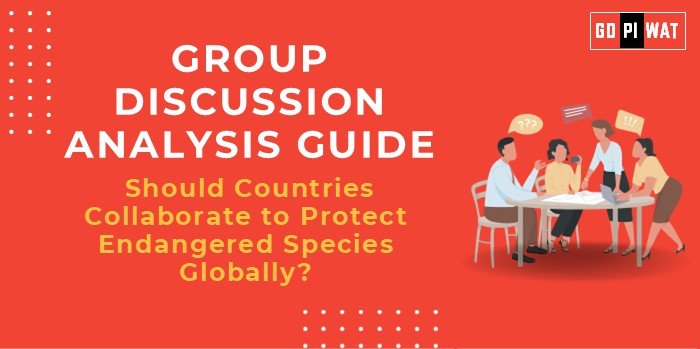🌍 Group Discussion Analysis Guide
Topic: Should Countries Collaborate to Protect Endangered Species Globally?
📚 Introduction to the Topic
Opening Context: The ongoing extinction crisis has placed nearly 42,100 species on the International Union for Conservation of Nature (IUCN) Red List. Biodiversity loss poses risks not only to ecosystems but also to global economies and human survival.
Topic Background: Global collaborations, such as the Convention on International Trade in Endangered Species (CITES) and the Paris Agreement’s biodiversity goals, aim to safeguard wildlife. However, varying priorities and resource gaps among nations challenge collective efforts.
📊 Quick Facts and Key Statistics
- Species at Risk: Over 1 million species face extinction (IPBES 2019) – highlights the urgency for action.
- Deforestation Impact: Nearly 18 million hectares of forest are lost annually, displacing habitats (FAO 2022).
- Economic Value: Pollinators contribute $235–577 billion annually to global agriculture (IPBES).
- Current Global Conservation Spend: Approximately $24 billion annually—far short of the $140 billion needed (IUCN).
🔑 Stakeholders and Their Roles
- Governments: Enact policies, fund conservation, and support international agreements.
- NGOs: Implement ground-level conservation projects and create public awareness.
- Businesses: Minimize ecological footprints, invest in sustainable supply chains.
- Communities: Protect local biodiversity through sustainable practices.
- International Bodies: Oversee compliance with treaties and provide technical assistance.
🌟 Achievements and Challenges
- Achievements:
- CITES Effectiveness: Regulated wildlife trade and reduced poaching of several species.
- Success Stories: Increase in tiger populations in India by 33% (NTCA, 2022).
- Protected Areas Expansion: Global protected area coverage now at 17% of land and 8% of oceans.
- Challenges:
- Lack of Funding: Annual shortfall of $116 billion for conservation efforts.
- Non-Uniform Laws: Varying wildlife protection standards across countries.
- Global Comparisons: Costa Rica dedicates 26% of its land to conservation, while many nations fall below 10%.
⚖️ Structured Arguments for Discussion
- Supporting Stance: “Collaborative frameworks, like CITES, demonstrate the power of unified efforts in curbing illegal wildlife trade and protecting endangered species.”
- Opposing Stance: “Differences in national priorities and economic capacities hinder meaningful global collaboration for biodiversity protection.”
- Balanced Perspective: “While collaboration is essential, localized approaches tailored to specific ecosystems and challenges remain crucial.”
🎯 Effective Discussion Approaches
- Opening Approaches:
- “The extinction of nearly 1 million species is a global concern requiring unified action.”
- “Consider the success of CITES in regulating wildlife trade—why not replicate similar models for broader conservation efforts?”
- Counter-Argument Handling:
- “While economic disparities pose challenges, collaborative funding mechanisms like the Global Environment Facility can bridge the gap.”
💡 Strategic Analysis of Strengths and Weaknesses
- Strengths: Global frameworks, technological advancements, growing awareness.
- Weaknesses: Funding gaps, non-compliance, political disagreements.
- Opportunities: Innovations in conservation technology, partnerships with private sectors.
- Threats: Climate change acceleration, illegal wildlife trade networks.
🌱 Connecting with B-School Applications
- Real-World Applications: Wildlife conservation finance projects, CSR initiatives in biodiversity.
- Sample Interview Questions:
- “How can global conservation efforts align with business interests?”
- “What role does public-private partnership play in protecting endangered species?”
- Insights for B-School Students: Consider innovative funding models or policies for conservation in research or internships.


